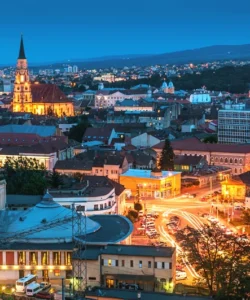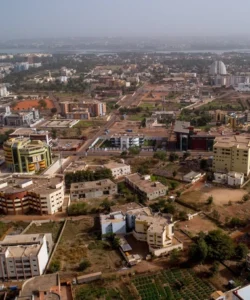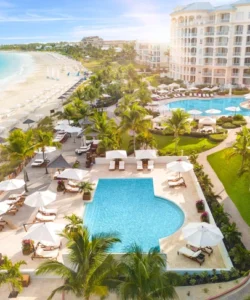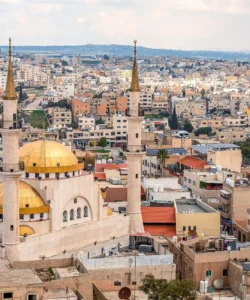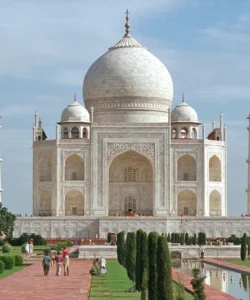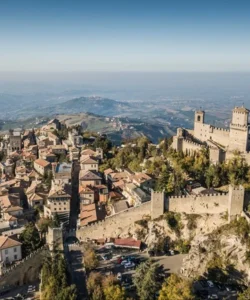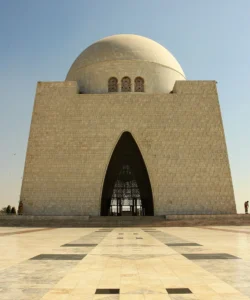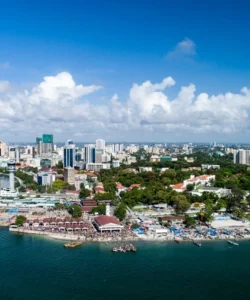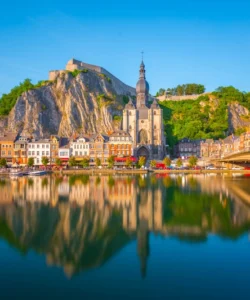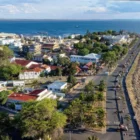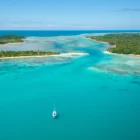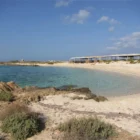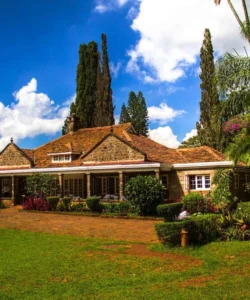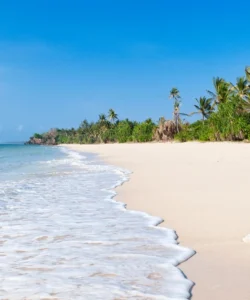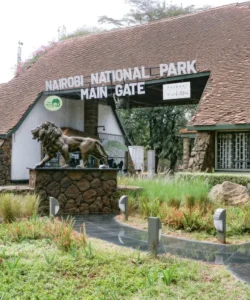Malacca City, known locally as Melaka, is a historic port city on the southwest coast of Peninsular Malaysia. With a rich and complex past shaped by Malay sultans and successive waves of Portuguese, Dutch, and British colonial rule, it stands as a living testament to centuries of East-West trade and cultural exchange. Along with George Town in Penang, it was inscribed as a UNESCO World Heritage Site in 2008, celebrated for its unique multicultural urban landscape.
Listen to an introduction about Malacca City

Name: Malacca City (Malay: Bandaraya Melaka or Kota Melaka; also commonly spelled Melaka)
Address: Malacca City is the capital of the Malaysian state of Malacca, located along the Straits of Malacca on the southwestern coast of Peninsular Malaysia. Its historic core is centered around the Malacca River and St. Paul’s Hill.
How to Get There:
Malacca City is well-connected and a popular day or weekend trip destination from Kuala Lumpur and Singapore.
- By Air: While Malacca does have a small international airport (Malacca International Airport, MKZ), it has very limited flights. Most international visitors fly into Kuala Lumpur International Airport (KLIA) or KLIA2. From KLIA, you can:
- Bus: Take a direct airport bus from KLIA to Melaka Sentral (Malacca’s main bus terminal), which takes about 2-3 hours.
- Taxi/Grab: Hire a taxi or use Grab (ride-sharing app) for a direct transfer to Malacca City (approx. 1.5-2 hours, depending on traffic).
- By Bus (Most Common): Direct express buses are the most popular and affordable way to reach Malacca from major cities:
- From Kuala Lumpur: Buses depart frequently from Terminal Bersepadu Selatan (TBS) and arrive at Melaka Sentral (approx. 2-3 hours). From Melaka Sentral, you’ll need a local bus, taxi, or Grab to the city center.
- From Singapore: Direct buses are available from various points in Singapore to Melaka Sentral (approx. 4-5 hours, including border crossing).
- By Car: You can drive to Malacca via the North-South Expressway (PLUS Highway). It’s approximately 1.5-2 hours from Kuala Lumpur and 3-4 hours from Singapore. Parking is available, though it can be crowded during peak seasons.
- By Train: There is no direct train service to Malacca City. The closest train station is Pulau Sebang/Tampin (about 38 km away). From there, you’d need a bus or taxi to the city center.
- Getting Around Malacca City: The historic core is highly walkable. Other options include:
- Walking: The best way to explore the UNESCO Heritage Zone.
- Trishaw (Cycle Rickshaw): A unique and colorful way to tour the city, often decorated with elaborate themes and playing loud music, especially at night.
- Malacca River Cruise: Offers a scenic perspective of the city’s historical buildings and murals along the riverbanks.
- Local Buses/Grab: For areas further afield.
Landscape and Architecture:
Malacca City’s landscape is an urban tapestry woven with the threads of its colonial past and vibrant multicultural present. Its architecture is its defining feature.
- Malacca River: The city is bisected by the Malacca River, which historically was its lifeline as a trading port. Today, the riverbanks are lined with beautifully restored shophouses, cafes, and colorful street art, making a scenic backdrop for river cruises.
- Colonial Legacies:
- Dutch Square (Red Square): This iconic square is dominated by bright terracotta-red colonial buildings, including the Stadthuys (the former Dutch City Hall, now a museum complex), and Christ Church (the oldest functioning Protestant church in Malaysia, built by the Dutch). These structures are prime examples of Dutch colonial architecture.
- Portuguese Ruins: Perched atop St. Paul’s Hill are the Ruins of St. Paul’s Church (built by the Portuguese in 1521), offering panoramic views of the city and the Straits of Malacca. At the base of the hill lies Porta de Santiago, the sole surviving gate of the formidable A Famosa fortress, built by the Portuguese in 1511. The Portuguese Settlement is a living community that preserves Portuguese culture and heritage, distinct from the main historical center.
- British Influence: While less prominent than Dutch or Portuguese, British colonial structures can also be found, reflecting their later presence.
- Chinese Shophouses and Clanhouses: Similar to George Town, Malacca boasts a significant collection of traditional Chinese shophouses in its Chinatown area (especially along Jonker Street), reflecting the “Straits Eclectic” style. Elaborate clanhouses like Cheng Hoon Teng Temple (the oldest functioning Chinese temple in Malaysia) and Baba & Nyonya Heritage Museum (a restored Peranakan mansion) showcase the rich heritage of the Straits Chinese (Peranakan) community.
- Diverse Religious Architecture: The city’s “Street of Harmony” (Jalan Tukang Emas/Jalan Tokong) exemplifies its multiculturalism, featuring the Cheng Hoon Teng Temple (Chinese), Kampung Kling Mosque (Malay/Indian Muslim), and Sri Poyatha Moorthi Temple (Hindu), all within close proximity.
- Street Art and Murals: Similar to George Town, Malacca has embraced street art and murals, especially along the riverfront and in hidden alleys, adding a contemporary artistic flair to its historic walls.
What Makes It Famous:
- UNESCO World Heritage Site: Inscribed in 2008 alongside George Town, Malacca is recognized for its unique multicultural urban fabric, reflecting over 500 years of East-West trading and cultural exchanges.
- Layered History: Its distinct periods of rule by the Malacca Sultanate, followed by the Portuguese, Dutch, and British, have left a tangible and intangible legacy in its architecture, culture, and cuisine, making it a “living museum.”
- Multiculturalism: It’s a vibrant melting pot where Malay, Chinese (especially Peranakan), Indian, and European influences have intertwined to create a unique local identity, evident in its architecture, food, and traditions.
- Historical Landmarks: Iconic sites like the Stadthuys (Red Square), A Famosa, St. Paul’s Church ruins, and the Malacca River are central to its appeal, drawing visitors to explore its past.
- Peranakan Culture: Malacca is a key center for the unique Peranakan (Baba Nyonya) culture, a fascinating blend of Chinese and Malay traditions, especially showcased in its food and heritage homes.
- Food Scene: While perhaps not as sprawling as Penang, Malacca is famous for its distinct local delicacies, including Chicken Rice Balls, Nyonya Laksa, Cendol, Satay Celup, and the spicy Portuguese-influenced seafood. Jonker Street night market is a culinary highlight on weekends.
- River Cruise: The Malacca River Cruise offers a charming and relaxing way to see many of the city’s highlights from a different perspective.
Differences from Some Other Wonders:
- Succession of Colonial Powers: While George Town was primarily a British trading post, Malacca’s history is distinguished by its direct rule under three successive European colonial powers (Portuguese, then Dutch, then British), each leaving distinct architectural and cultural imprints. This layered colonial history is more pronounced and visible than in many other former trading cities.
- Portuguese Legacy: Malacca uniquely preserves a strong Portuguese heritage, including the tangible ruins of A Famosa and St. Paul’s Church, and the living Portuguese Settlement community, which is largely absent in other Malaysian cities.
- “Red Square” Distinctiveness: The iconic Dutch Square, with its uniformly red colonial buildings (Stadthuys, Christ Church), is a highly recognizable and unique architectural ensemble that sets it apart.
- River as Central Artery: While George Town is on an island, Malacca’s historic center is defined by the Malacca River, which served as its original economic lifeline and now offers scenic boat tours, providing a different urban landscape experience.
- Chicken Rice Balls and Specific Peranakan Cuisine: While both George Town and Malacca are food havens with Peranakan influences, Malacca is particularly famous for specific dishes like Chicken Rice Balls and its own distinct variations of Nyonya cuisine, making it a culinary destination in its own right.
- More Compact Heritage Zone: Malacca’s main historical attractions are more concentrated and easily walkable within a smaller area compared to the more sprawling heritage zone of George Town.

































